Assessment Method to Identify the Potential of Rooftop PV Systems in the Residential Districts
Abstract
:1. Introduction
2. Materials and Methods
2.1. Optimising Rooftop PV System
2.2. Estimating the Potential of Rooftop PV System Using Heat Map Tool
2.3. Methodology of Suburban Rooftop PV System Analysis
- Locate a house in a respective suburb by zoom in the SunSPoT online map.
- Identify the usable roof area from the total area of the roof samples by removing the area of objects obstructing the layout of the PV panels, such as the area of chimneys, satellite dishes, antennas, and air-conditioning units. More than one side of the roof (north, east, and west) is considered if their area is suitable for PV panel installation (>4 m2).
- Draw the location of the PV array on the selected house roof using the SunSPoT roof space mapping tool, as described in Figure 3. This figure shows an example of the selected area of a north-east roof that would be suitable for the installation of PV panels, and the eliminated roof area on the east and west sides because it is less than 4 m2. The southern roof of all house samples was not considered in the analysis because it is not feasible from an economic perspective.
- Perform the analysis using the calculate function in SunSPoT to estimate the rooftop PV system information, such as the PV panel array area, roof orientation, roof tilt angle, the capacity of the system, the annual yield, CO2 emissions avoided, and annual savings.
- The data collected in step 4 are copied into an Excel sheet to perform statistical analysis.
3. Results and Discussion
- Ep Annual energy production (kWh),
- Fs Average roof suitability factor,
- Pc Average capacity of PV panel array (kW),
- Emax Maximum energy production rate (kWh/kW),
- N Number of houses in each suburb.
4. Conclusions
Author Contributions
Funding
Conflicts of Interest
References
- Egan, R.; Kallmier, E.; Ashby, O.; Koschier, L.; Passey, R. National Survey Report of PV Power Applications in Australia; Australian PV Institute: Sydney, Australia; Australian Renewable Energy Agency: Canberra, Australia, 2019.
- Chen, C.-N.; Yang, C.-T. The Investability of PV Systems under Descending Feed-In Tariffs: Taiwan Case. Energies 2021, 14, 2728. [Google Scholar] [CrossRef]
- Al-Aboosi, F.Y.; Al-Aboosi, A.F. Preliminary Evaluation of a Rooftop Grid-Connected Photovoltaic System Installation Under the Climatic Conditions of Texas (USA). Energies 2021, 14, 586. [Google Scholar] [CrossRef]
- Hu, R. Sustainable Development Strategy for the Global City: A Case Study of Sydney. Sustainability 2015, 7, 4549–4563. [Google Scholar] [CrossRef] [Green Version]
- Peng, J.; Lu, L. Investigation on the development potential of rooftop PV system in Hong Kong and its environmental benefits. Renew. Sustain. Energy Rev. 2013, 27, 149–162. [Google Scholar] [CrossRef]
- Miranda, R.; Szklo, A.; Chaeffer, R. Technical-economic potential of the roof top PV systems on Brazilian rooftops. Renew. Energy 2015, 75, 694–713. [Google Scholar] [CrossRef]
- Luka, N.N.; Seme, S.; Dezan, K.; Zalik, B.; Stumberger, G. Economic and environmental assessment of rooftops regarding suitability for photovoltaic systems installation based on remote sensing data. Energy 2016, 107, 854–865. [Google Scholar] [CrossRef]
- Assouline, D.; Mohajeri, N.; Scartezzini, J.-L. Quantifying rooftop photovoltaic solar energy potential: A machine learning approach. Sol. Energy 2017, 141, 278–296. [Google Scholar] [CrossRef]
- Lee, M.; Hong, T.; Jeongb, K.; Kima, J. A bottom-up approach for estimating the economic potential of the rooftop solar photovoltaic system considering the spatial and temporal diversity. Appl. Energy 2018, 232, 640–659. [Google Scholar] [CrossRef]
- Kouhestani, F.; Byrne, J.; Johnson, D.; Spencer, L.; Hazendonk, P.; Brown, B. Evaluating solar energy technical and economic potential on rooftops in an urban setting: The city of Lethbridge, Canada. Int. J. Energy Environ. Eng. 2019, 10, 13–32. [Google Scholar] [CrossRef] [Green Version]
- Jara, P.; Castro, M.; Esparcia, E.; Ocon, J. Quantifying the Techno-Economic Potential of Grid-Tied Rooftop Solar Photovoltaics in the Philippine Industrial Sector. Energies 2020, 13, 19. [Google Scholar] [CrossRef]
- Roberts, M.; Nagrath, K.; Briggs, C.; Copper, J.; Bruce, A.; Mckibben, J. How much Rooftop Solar can be Installed in Australia? In Report for the Clean Energy Finance Corporation and the Property Council of Australia; UTS: Sydney, Australia, 2019. [Google Scholar]
- Roberts, M.; Copper, J.; Bruce, A. Analysis of Rooftop Solar Potential on Australian Residential Buildings. In Proceedings of the Asia Pacific Solar Research Conference, Sydney, Australia, 4–6 December 2018. [Google Scholar]
- Mermoud, A. PVSYST Photovoltaic Software V5.74; The University of Geneva: Geneva, Switzerland, 2012. [Google Scholar]
- Odeh, S. Long Term Assessment of a Grid Connected Solar PV System in Sydney. J. Energy Power Eng. 2016, 10, 591–599. [Google Scholar] [CrossRef]
- Australian PV Institute. SunSPoT Rooftop Solar Mapping Tool. Available online: https://pv-map.apvi.org.au/sunspot/map#/ (accessed on 21 January 2021).
- Australian Bureau of Statistics. Quickstats. 2016. Available online: https://quickstats.censusdata.abs.gov.au/census_services/getproduct/census/2016/quickstat/SSC10180?opendocument (accessed on 24 February 2021).

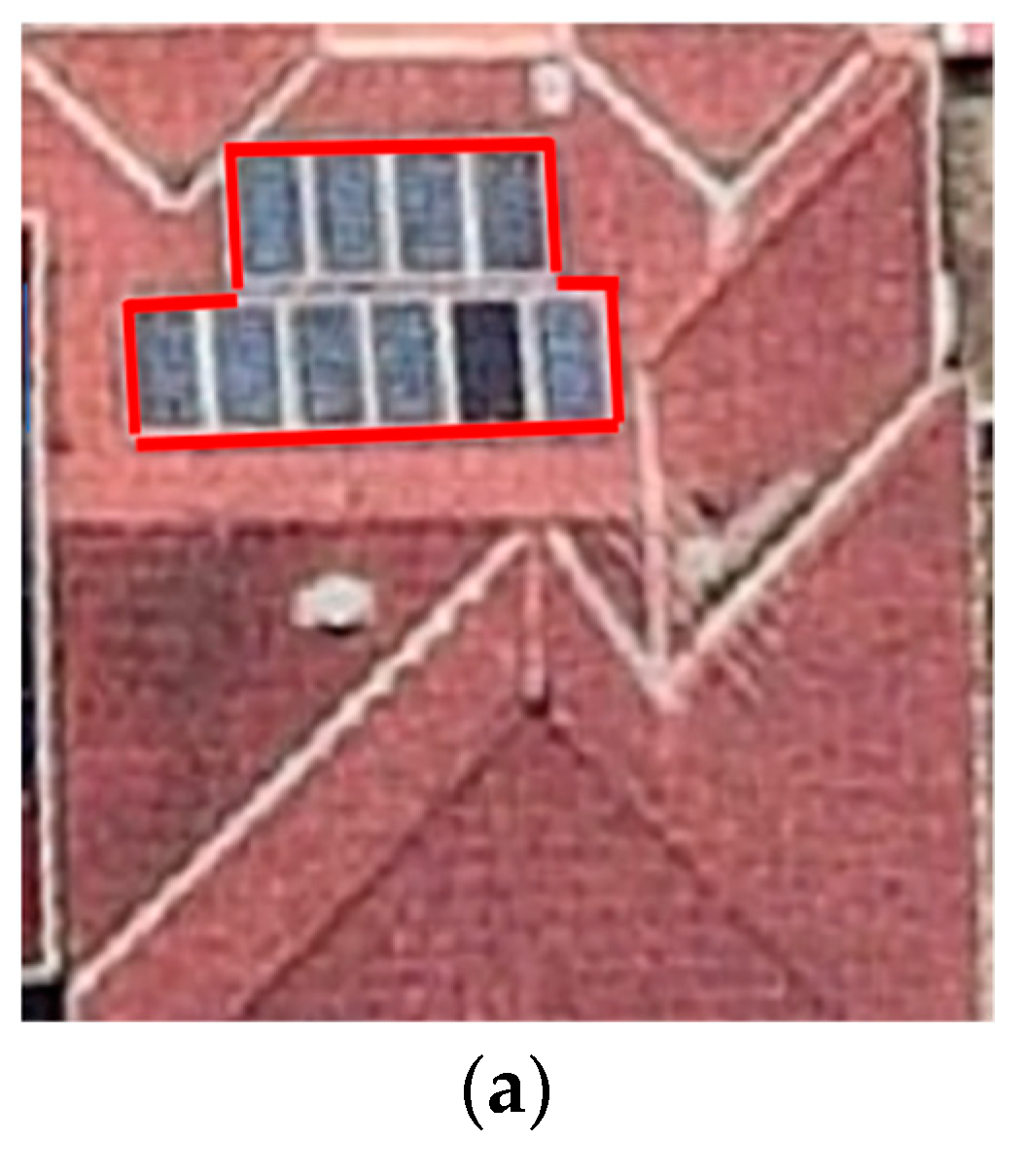
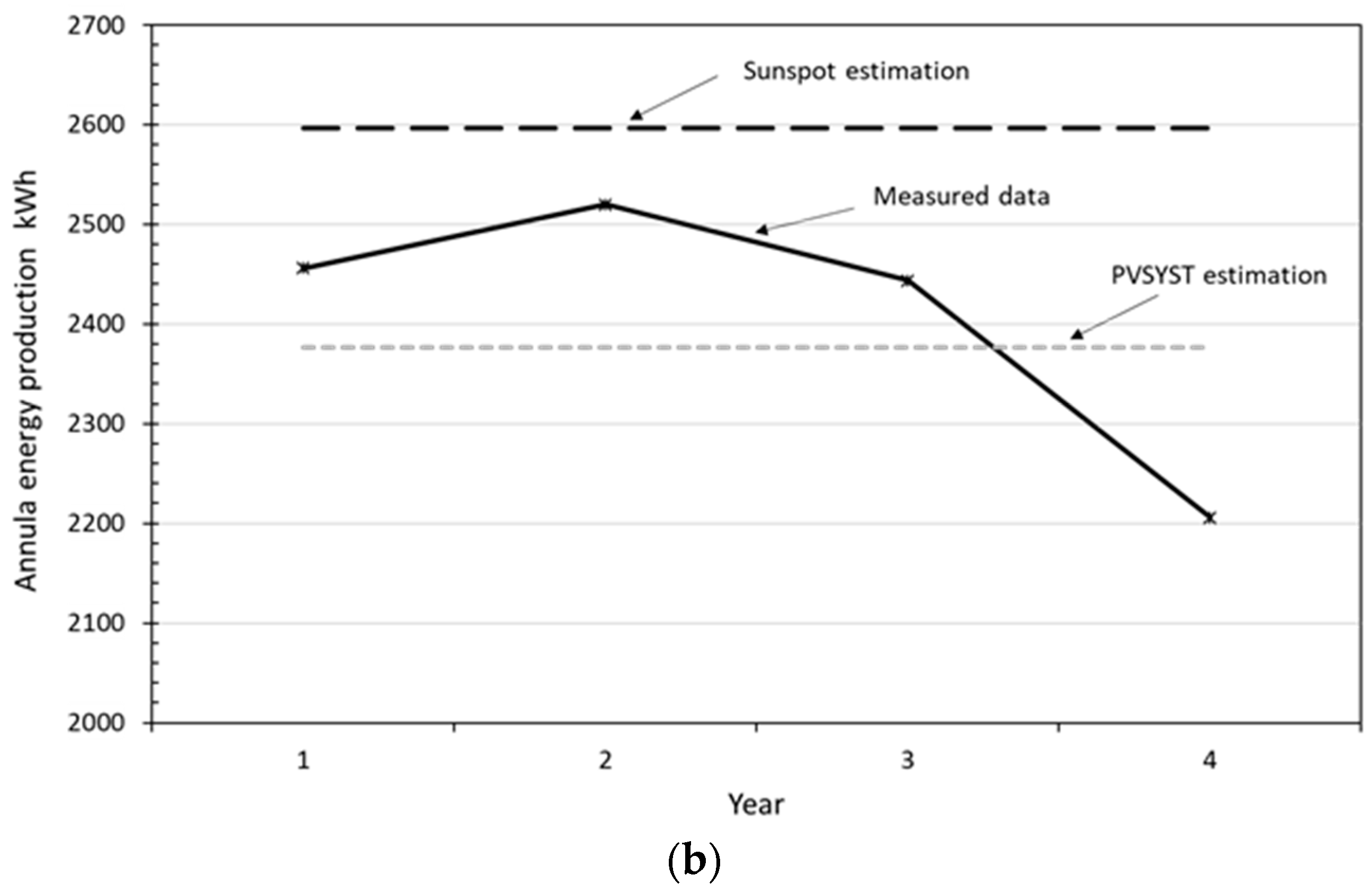
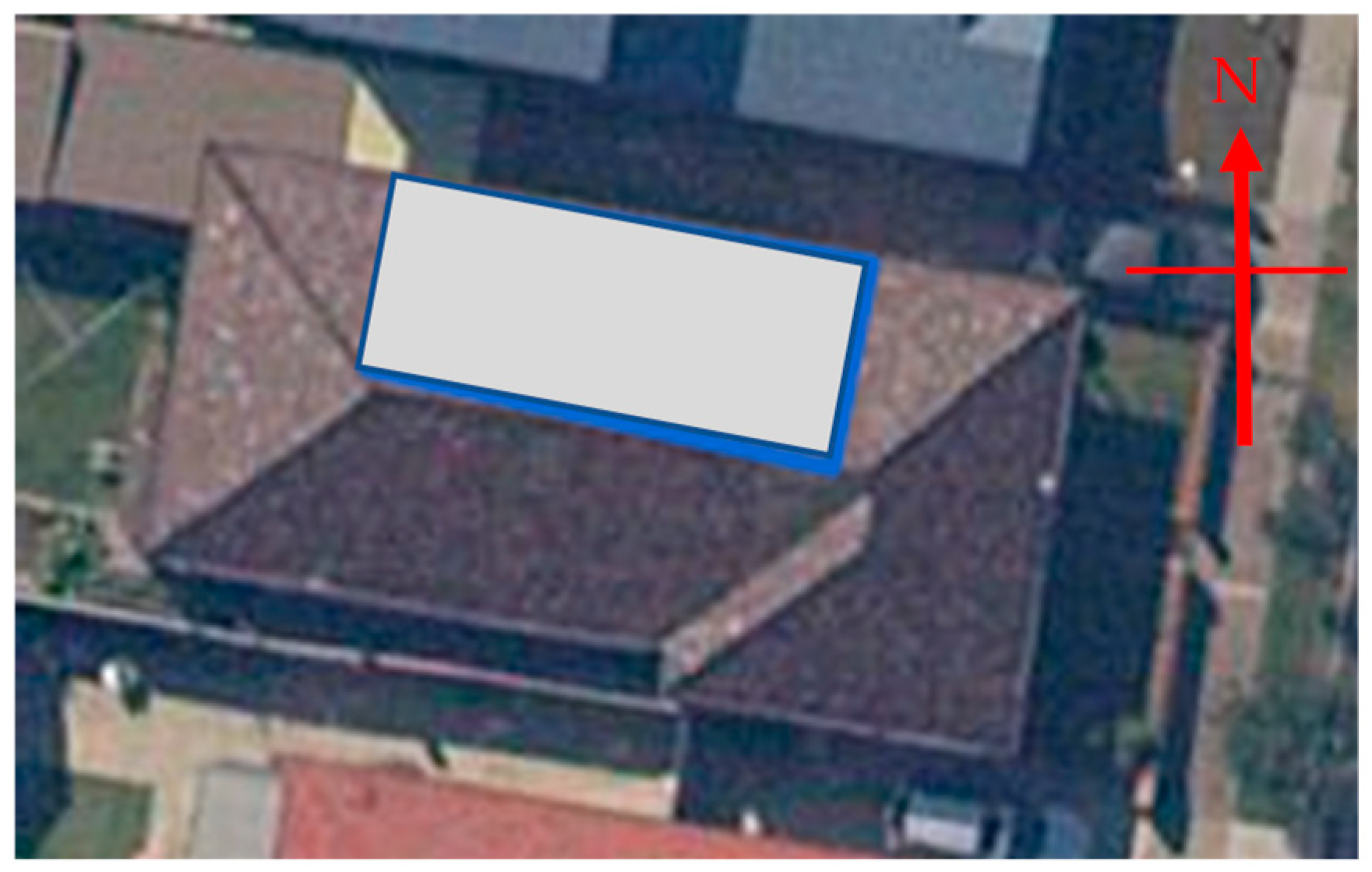
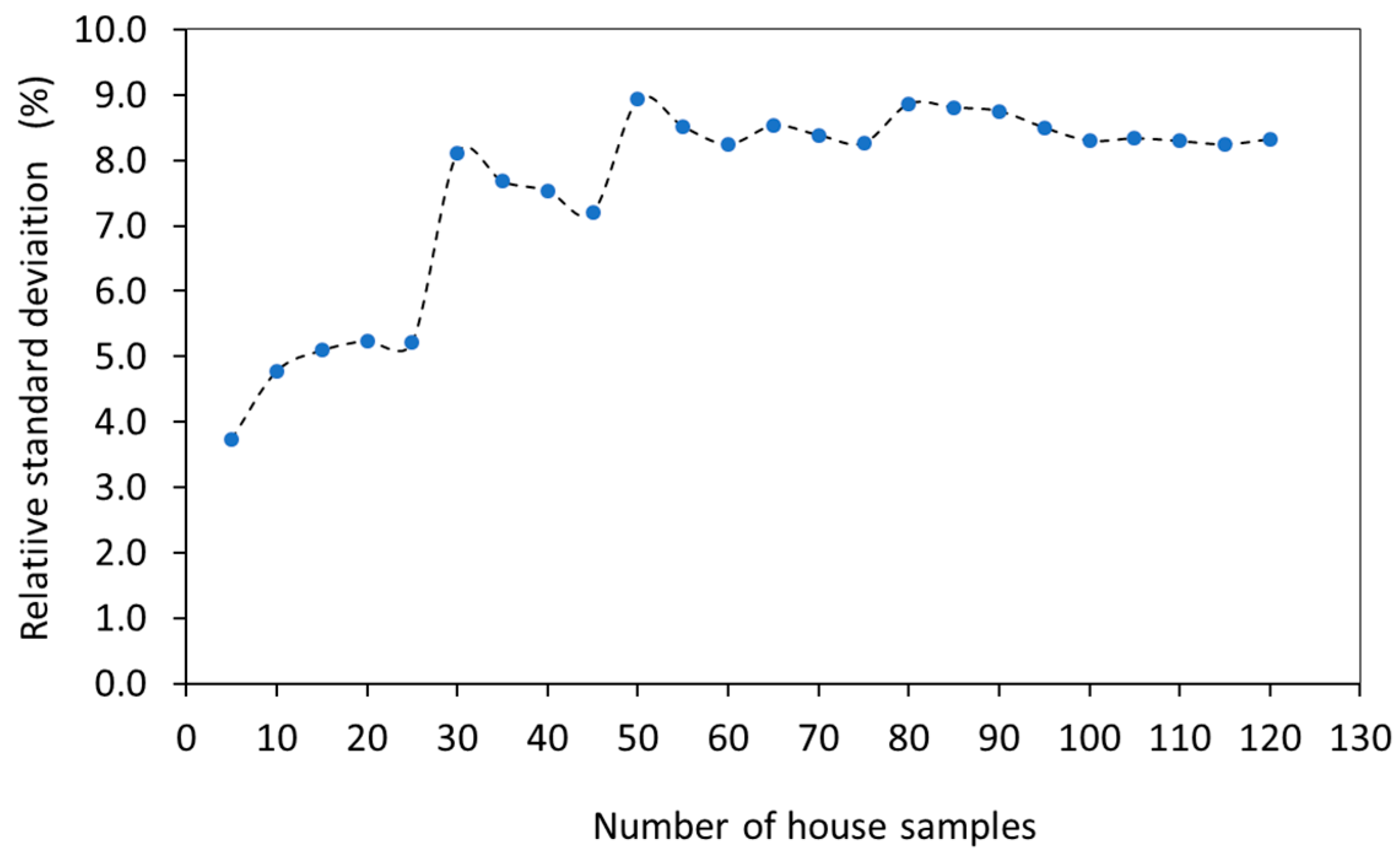
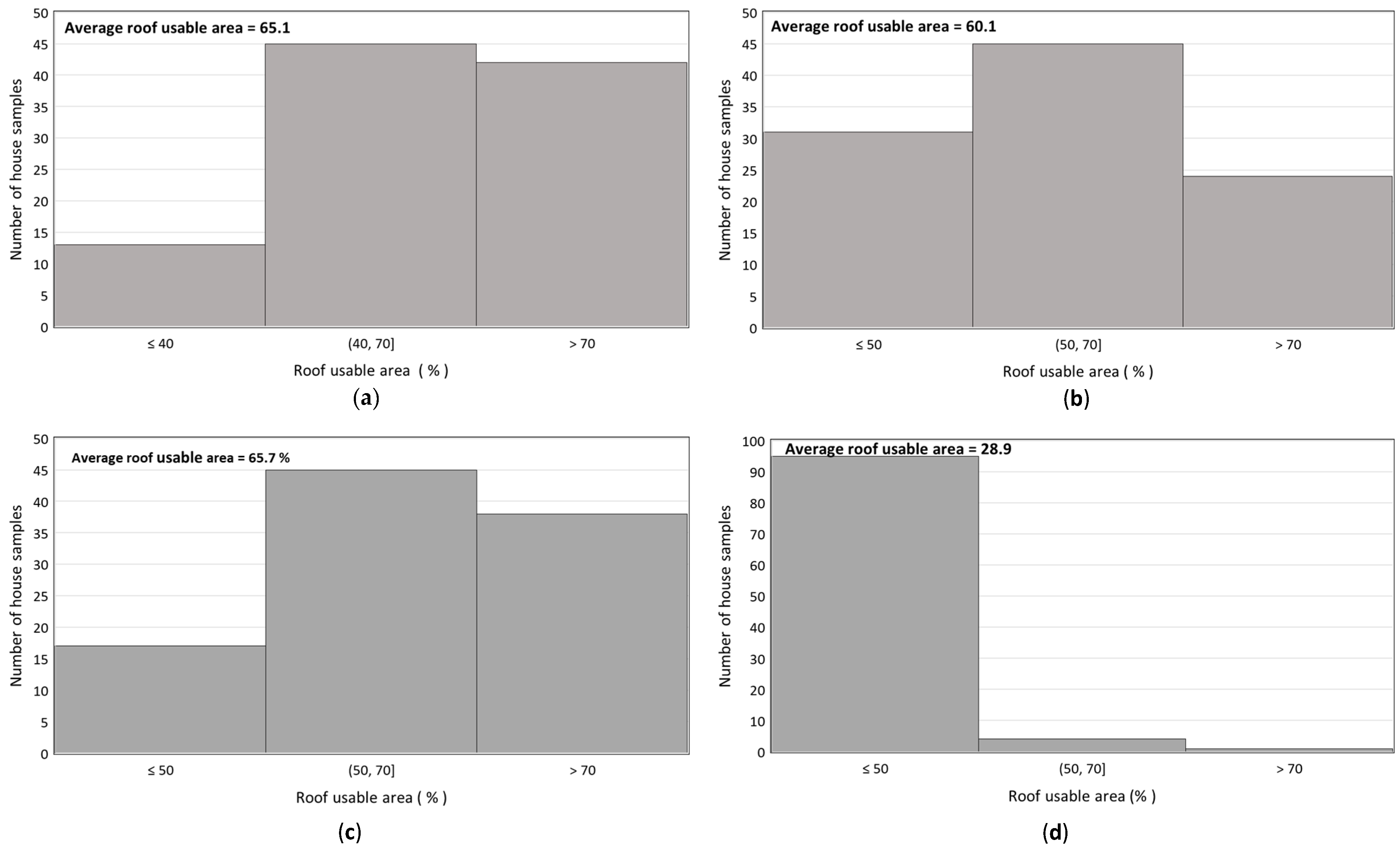
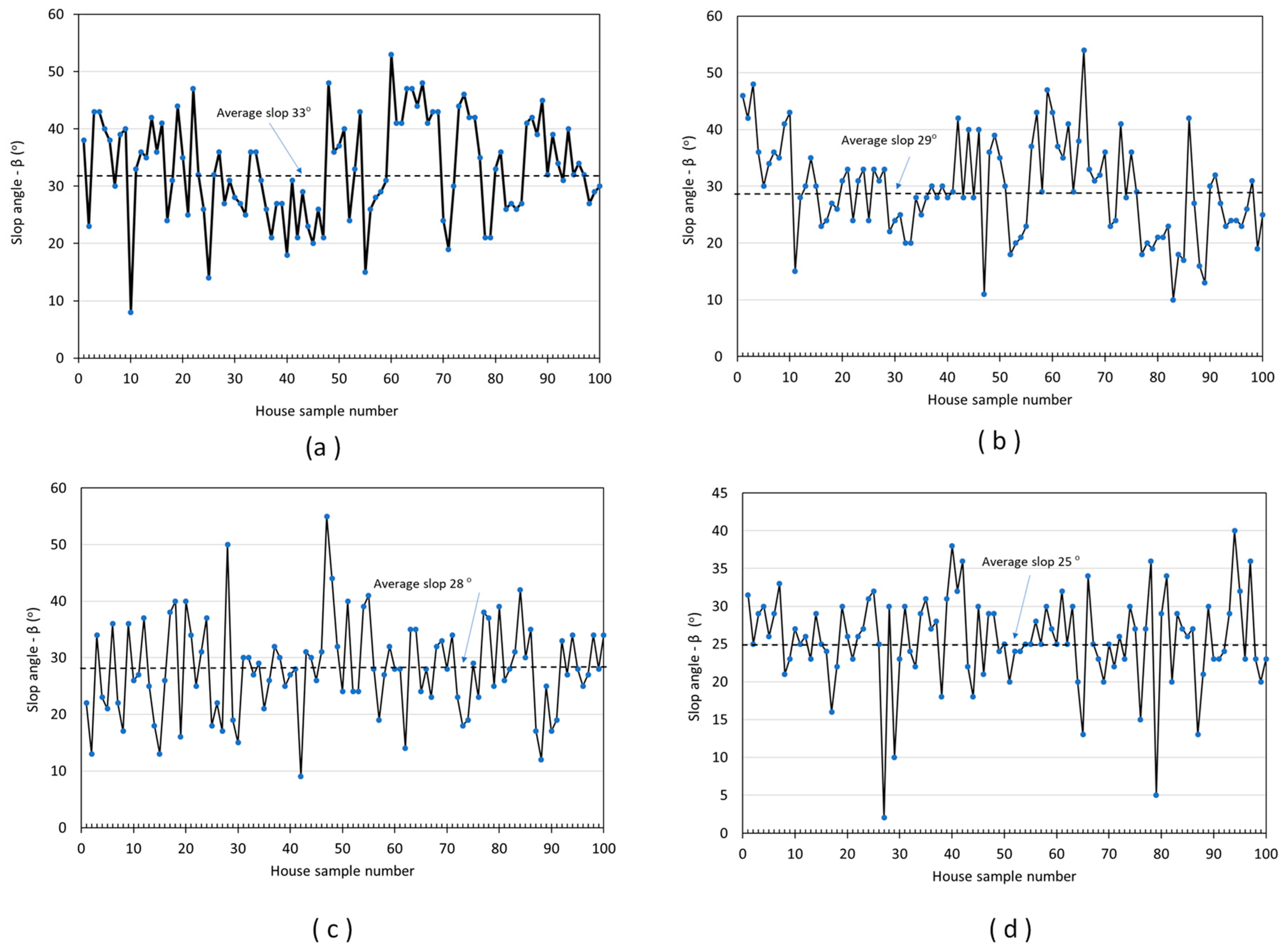

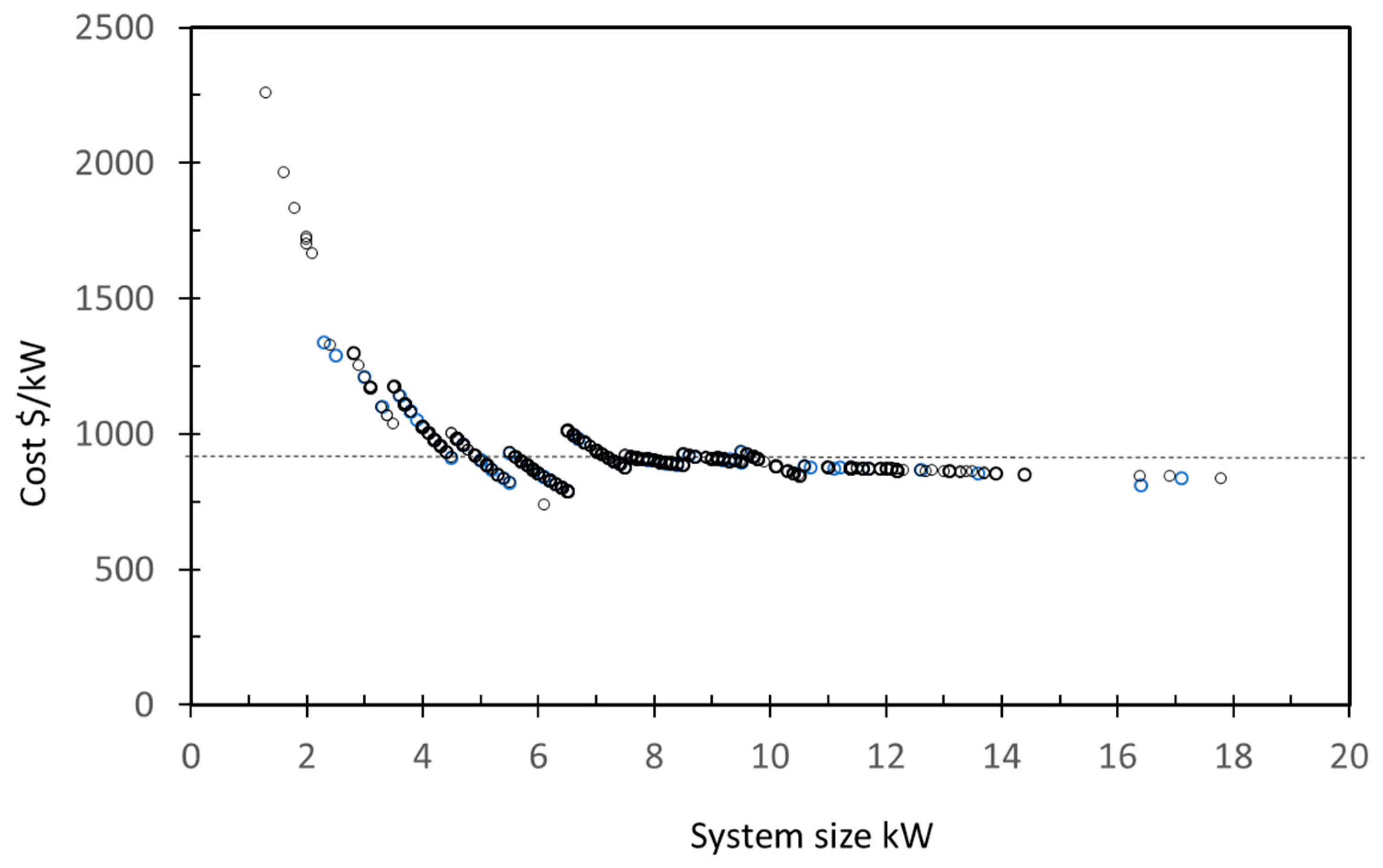
| PV module Si-Mono Model FS—175 W | |
| Number of PV modules in series | 5 modules in parallel 2 strings |
| Total number of PV modules | 10 × 175 W each |
| Total nominal power (@ STC) | 1750 W |
| Array operating characteristics | 164 V and 9.6 A |
| Total module area | 12.8 m2 |
| Inverter Model Sunny Boy SB 1700 | |
| Manufacturer | SMA |
| Operating Voltage | 139–320 V |
| Power | 1.55 kW AC |
| Suburb | B (°) | Z (°) | Fs | Pc (Kw) | N | Demand (Gwh/Year) | Production Ep (Gwh/Year) | Hectares of Trees Equivalent to CO2 Removed Annually |
|---|---|---|---|---|---|---|---|---|
| Newtown | 33 | 23 | 0.74 | 7.6 | 7516 | 40.48 | 75.9 | 1783 |
| Redfern | 29 | 7 | 0.76 | 7.2 | 7186 | 65.88 | 70.62 | 1589 |
| Erskineville | 28 | 5 | 0.76 | 7.9 | 4047 | 24.7 | 43.64 | 934 |
| Rosebery | 25 | 10 | 0.75 | 6.9 | 4415 | 60.5 | 41.03 | 1047 |
Publisher’s Note: MDPI stays neutral with regard to jurisdictional claims in published maps and institutional affiliations. |
© 2021 by the authors. Licensee MDPI, Basel, Switzerland. This article is an open access article distributed under the terms and conditions of the Creative Commons Attribution (CC BY) license (https://creativecommons.org/licenses/by/4.0/).
Share and Cite
Odeh, S.; Nguyen, T.H. Assessment Method to Identify the Potential of Rooftop PV Systems in the Residential Districts. Energies 2021, 14, 4240. https://doi.org/10.3390/en14144240
Odeh S, Nguyen TH. Assessment Method to Identify the Potential of Rooftop PV Systems in the Residential Districts. Energies. 2021; 14(14):4240. https://doi.org/10.3390/en14144240
Chicago/Turabian StyleOdeh, Saad, and Tri Hieu Nguyen. 2021. "Assessment Method to Identify the Potential of Rooftop PV Systems in the Residential Districts" Energies 14, no. 14: 4240. https://doi.org/10.3390/en14144240
APA StyleOdeh, S., & Nguyen, T. H. (2021). Assessment Method to Identify the Potential of Rooftop PV Systems in the Residential Districts. Energies, 14(14), 4240. https://doi.org/10.3390/en14144240





